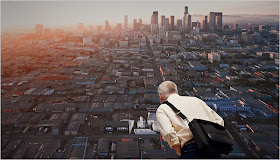¨Architecture is rediscovering its social conscience. That’s the message behind “Small Scale, Big Change: New Architectures of Social Engagement,” an exhibition at the Museum of Modern Art.
The show, which looks at 11 projects around the world that have had major social impacts despite modest budgets and sizes, is a rebuttal to the familiar complaint that the profession is too focused on aesthetic experimentation and not enough on the lives of ordinary people. Not incidentally, it is also part of a philosophical shift in the museum’s architecture and design department, which, for most of the eight decades since its founding by Philip Johnson, famously championed architecture’s artistic merits over its social value.
Given that, the big surprise of the show is that so many of the projects are actually good. Organized by Andres Lepik and Margot Weller, the exhibition makes a powerful case that it is possible to create work that is both socially uplifting and architecturally compelling. It’s a notion that dominated architectural thought for much of the first half of the 20th century but that seems so out of keeping with the ethos of the practice today, particularly in New York, that it’s almost jarring.
The show opens with a subtle but clear political message. A wall in the first gallery is dominated by a big photograph of a mud-brick primary school shaded by a cluster of trees in an otherwise barren landscape in Burkina Faso. Designed by Diébédo Francis Kéré and completed in 2001, it’s an appealing building, with a wood truss roof that has the lightness of a tree canopy. But the first impression is of something precariously close to a cliché of socially committed architecture.¨
REFERENCE: Excerpt from the article Real-Life Design: Erecting Solutions to Social Problems. By Nicolai Ouroussoff. For New York Times. Pictures downloaded from the article.
Keep on reading:


No comments:
Post a Comment